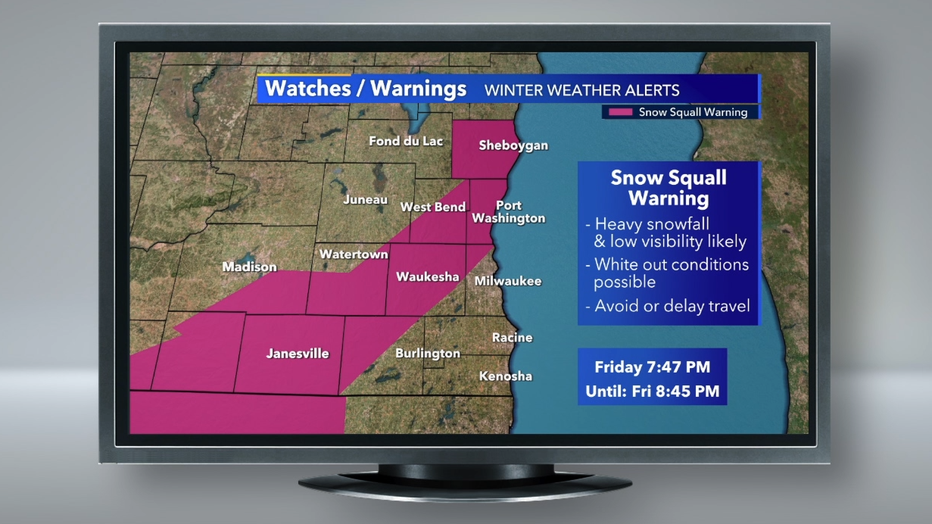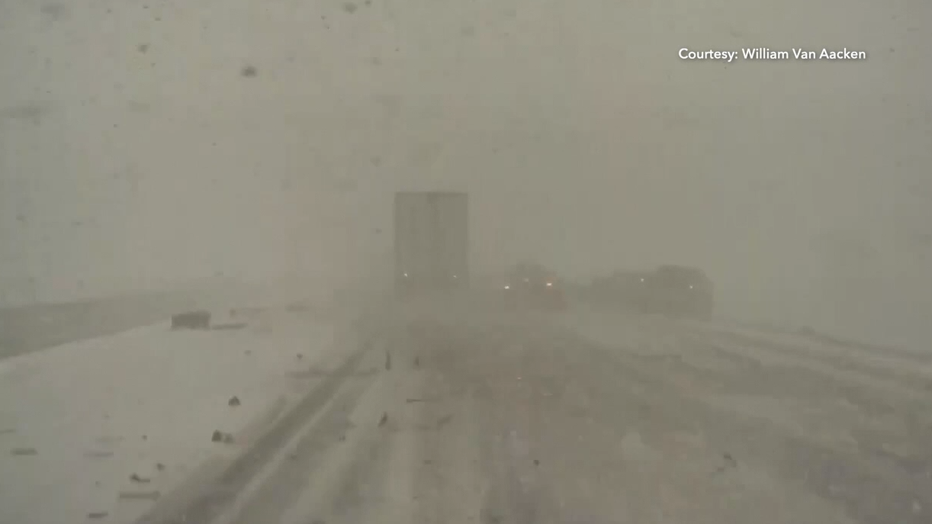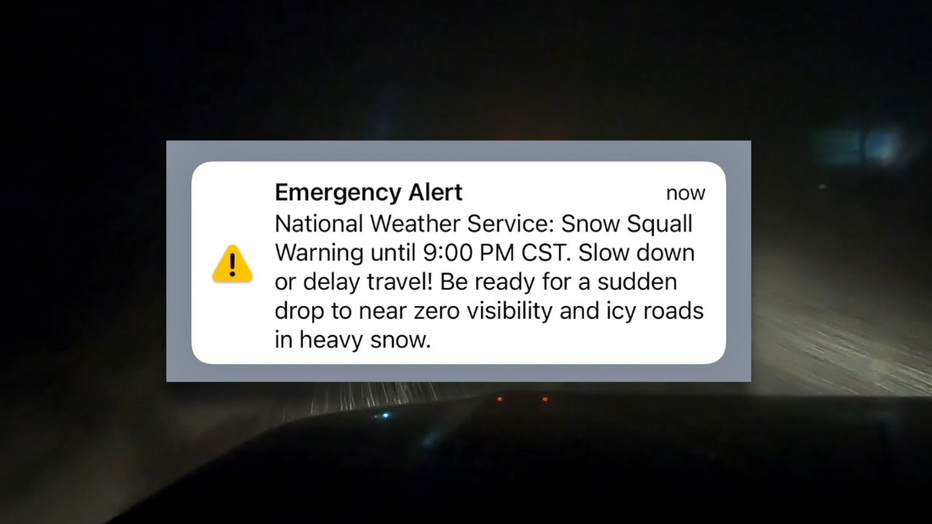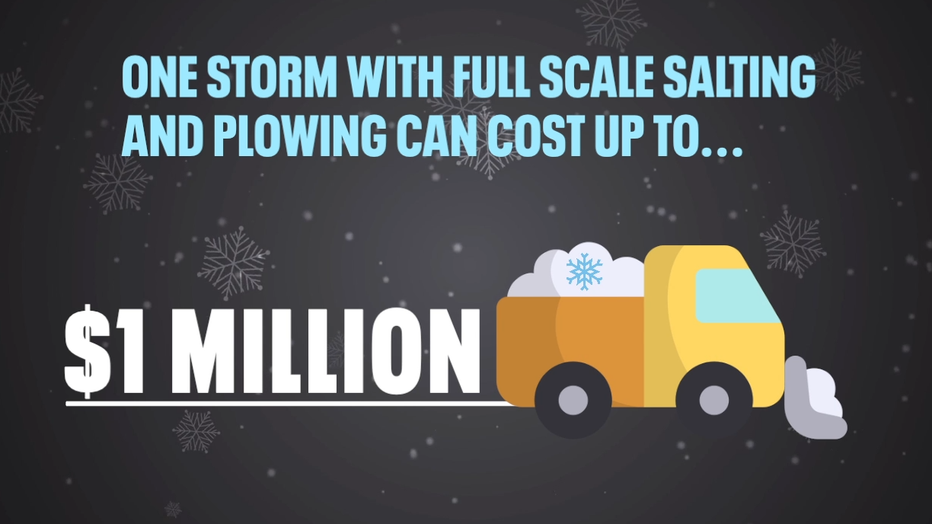Wisconsin winter; snow squall dangers, cities' snow removal costs

Snow squall dangers, snow removal in Wisconsin
Despite entering a warmer and drier El Ni?o winter, falling snow will soon replace falling leaves and that means navigating snowy roads.
MILWAUKEE - Despite entering a warmer and drier El Niño winter, falling snow will soon replace falling leaves and that means navigating snowy roads.
Drivers in Wisconsin are becoming familiar with the relatively new "Snow Squall Warning" issued by the National Weather Service when normal driving conditions deteriorate to near zero visibility in a matter of seconds.

A snow squall is defined as an intense short-lived burst of heavy snowfall that leads to a quick reduction in visibilities. It can be life-threatening to drivers and is known to cause large, chain reaction accidents on heavily traveled interstates.
SIGN UP TODAY: Get daily headlines, breaking news emails from FOX6 News
"There's this brief 30 to 60 minutes of intense snow where your roads go from being completely dry and easy to drive on to boom that snow hits, and it's white-out, blizzard conditions," said Tim Halbach of the National Weather Service.
Halbach said although we do not experience snow squalls often, when we do, it is a serious situation.

Southeast Wisconsin has only had one snow squall warning since they were first issued in 2018. That happened the evening of Feb. 18, 2022. Timmerman Airport north of Milwaukee recorded a wind gust of 75 mph and thundersnow was also reported in spots.
Snow squalls have always been a winter hazard but have not been easily communicated. They do not produce enough snow to prompt a Winter Storm Warning and pose a more imminent threat than Winter Weather Advisory criteria.
FREE DOWNLOAD: Get breaking news alerts in the FOX6 News app for iOS or Android
When a snow squall warning is issued, it will trigger the wireless alert system, signifying an imminent threat. A text alert with a special tone and vibration is sent to smartphones within the impacted area. It should be treated like a destructive severe thunderstorm or tornado warning, prompting you to take action.
"That may be a time to pull over and just wait out the snow," Halbach said,

It does not have to be a whiteout to create dangerous roadways. Often, the smallest snows create the most problems. That is why the Department of Public Works puts time and quite a bit of money into keeping our roads drivable and safe.
"We respond very quickly, within minutes, and for larger storms that we're anticipating, we're prepared before the snow even falls," said Carl Chopps with DPW.
The City of Milwaukee has an annual budget of $10.7 million for snow and ice control. The budget factors in long range forecasts and climate patterns like El Niño. It also takes into account how much money was needed in previous seasons and the potential for any additional outside staffing or equipment needs. Just one storm with full-scale salting and plowing can cost the city up to $1 million.

"Every storm we take a look at and anticipate what is the appropriate response. It’s a balance between what resources and equipment we have and what is required to keep the city streets safe for our citizens," Chopps said.
The Department of Public Works says time and temperature are the biggest factors for clearing the roads. They also urge Wisconsinites to give plow drivers space.
In case you are stuck or stranded due to bad weather, it's important to have an emergency kit in your car with blankets, cat litter, water and non-perishable food. That's in addition to your normal shovel and ice scraper.

